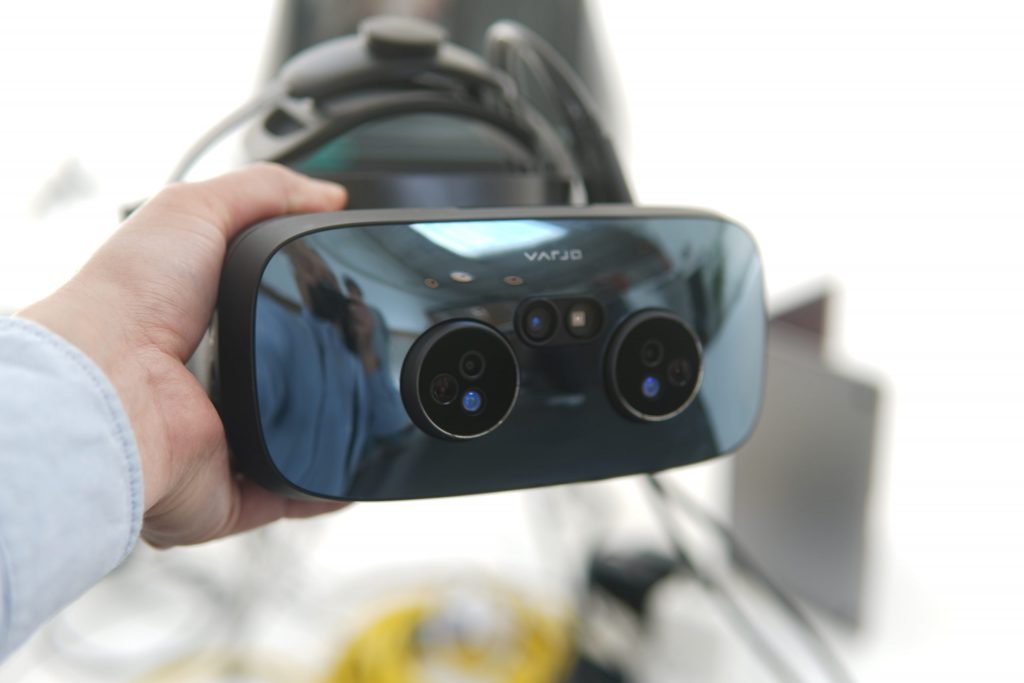[ad_1]
Varjo has announced the Varjo Reality Clouda secure SaaS platform that lets customers stream XR content from Autodesk VRED rendered on powerful enterprise-class hardware to consumer-level clients such as XR headsets, laptops, and mobile devices.
Varjo is well-known for its world-class VR headsets that feature eye-tracking and impressive human-resolution displays. The level of detail is so high that things like cockpit flight instruments are completely readable: an absolute necessity for the most immersive XR apps .
Previously, such a level of detail required connecting the XR headsets to a powerful local workstation to drive the rendering with a beefy (and very expensive) GPU and CPU configuration.
There are many situations where having physical possession of such an expensive computer might not be convenient. For instance, you might want to set up demo rooms in different locations, and physically deploying these computers is costly and might require on-site engineering expertise.
Varjo’s reality cloud is a remote rendering solution that solves this elegantly and efficiently. The rendering is done in a data center (AWS in this case) and streamed at high speed / low latency to a cheap thin client. For the end-user, It’s no more complicated than launching a regular app.
There are other cloud solutions like this, but Varjo is the only one I’ve seen that takes full advantage of the company’s Human Resolution rendering and displays. That’s a massive advantage in the enterprise XR business and an excellent reason to pay attention to this service .
Although you need a good Internet connection, it works on your typical consumer-level Internet. I tested it when Varjo rented a photo studio in San Francisco with run-the-mill internet connectivity. The service requires only 35Mbps (megabits per second).
Varjo uses little bandwidth thanks to a proprietary “foveated transport algorithm.” Foveated refers to the tracking of the eye gaze to prioritize something.
Varjo supports foveated rendering during the construction of each frame. However, foveated transport happens in the compression and transmission of the rendered frame over the network. The company claims it can achieve a lossless compression ratio of 1000:1.
Me (middle) with Varjo’s CTO Urho Konttori (right) and CBO Jussi Mäkinen (left)
Overall, the experience was great and comparable to an offline Varjo XR experience. There was no noticeable compression artifact, and the framerate was very acceptable for applications such as Architectural previews where you don’t always need 90 FPS+.
The first demo was a virtual car showroom with excellent integration of the car into the real-world studio. Varjo did a great job capturing the local light probes to render the 3D car as if it was in the physical room. I could even peek inside the vehicle, and every instrument was sharp and readable.
The meta-human demo. Photo from Varjo’s website, not from my actual session
The second demo was a “meta-human” (virtual character) that needed to be rendered realistically. Again, the extremely high resolution of Varjo headsets makes a world of difference when it comes to fine details such as hair or clothes texture (jeans, etc.). A lot of small things aggregate into very perceptible improvements. The meta-human is real enough that it felt weird to enter their personal space.
I haven’t created any Varjo Reality Cloud servers myself, but I’m well-familiar with the concept, and there’s little doubt that the Varjo Reality Cloud is attractive simply because it makes life much easier.
Additionally, renting virtual workstation instances for a short period instead of buying them makes it possible to rapidly scale and shut down utilization for special events or even weekly executive content reviews. That’s potentially a massive increase in usage, associated with a modest cost increase. The added value is straightforward to measure
Filed in . Read more about Virtual Reality (VR).
[ad_2]
Source link
